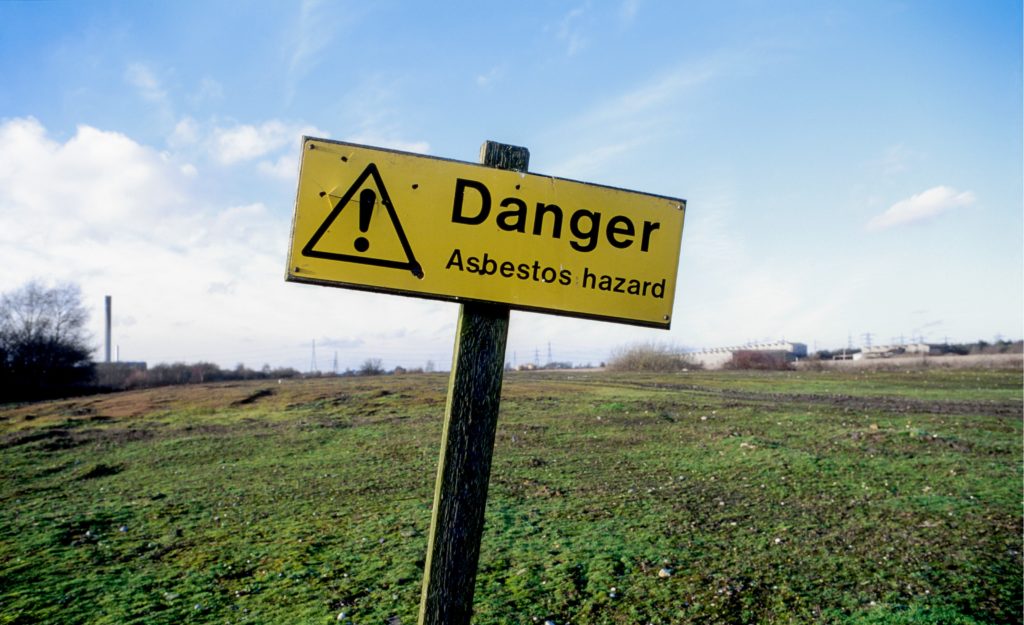Global Asbestos Awareness week, (1st – 7th April), was established to raise awareness surrounding the illnesses and consequential deaths that asbestos causes. Although it has been banned in the U.K. since 1999, there are over 1.5 million buildings in the UK that may contain asbestos (UKATA, 2019). Buildings erected pre-1999 can have dormant asbestos within their foundations, and can be accidentally disturbed during renovations or repairs. Unfortunately, asbestos is still legal in many countries around the world.
What is Asbestos?
Asbestos is a term for a group of minerals made of microscopic fibres. If you breathe in these fibres, they can damage your lungs (British Lung Foundation, 2019). Asbestos is classified as a carcinogen, meaning that it has the potential to cause cancer.
There are 4 main diseases associated with breathing in asbestos fibres:
- non-malignant pleural disease (diffuse pleural thickening and pleural plaques)
- asbestosis – a non-malignant scarring of the lung tissue
- asbestos-related lung cancer
- mesothelioma – a form of cancer mainly affecting the lining of the lungs (British Lung Foundation, 2019)
Asbestos-related illnesses develop over a number of years, so the dangers were previously unknown. This means asbestos was regularly used within construction; for insulation, flooring, and roofing. Asbestos was even used throughout the automotive industries, often used in brake linings. When left undisturbed, health risks are minimal. Asbestos is deadly once disturbed.

HSE Guidance:
The Health and Safety Executive advise the below steps, if you are at risk of coming into contact with Asbestos (HSE Website, 2019):
Identify whether asbestos is present and determine its type and condition
- People responsible for maintenance of non-domestic premises, have a ‘duty to manage’ the asbestos in them, and should provide you with information on where any asbestos is in the building and what condition it is in.
- If no information is available or it is limited and you suspect asbestos may be present you should have the area surveyed and representative samples of the material you are going to work on analysed.
- Alternatively, you can assume that any material you need to disturb does contain asbestos and take the appropriate precautions for the highest risk situation.
Carry out a risk assessment
- Decide if it’s possible to carry out the building or maintenance work avoiding the risk of asbestos exposure all together.
- If that’s not possible, identify who might be at risk and the level of possible asbestos exposure from any work.
- On this basis, decide what work methods are necessary to provide effective control of the risks.
- Further information on carrying out a risk assessment is available.
Decide if the work needs to be carried out by a licensed contractor
- Most asbestos removal work will require a contractor holding a licence from HSE.
- All work with sprayed asbestos coatings and asbestos lagging and most work with asbestos insulation and asbestos insulating board (AIB) requires a licence.
- Identify if your work needs a licensed contractor;
- Find a licensed contractor, or find out how to apply for a licence.
If the work is not licensable, decide if the work needs to be notified
- If it doesn’t need a licence, you can do maintenance work on or around ACMs with the appropriate controls in place.
- Some non-licensed work also has additional requirements, ie notification of work, medical surveillance and record keeping. This work is known as notifiable non-licensed work (NNLW).
Ensure those carrying out the work are suitably trained
- Any worker who is liable to disturb asbestos during their day-to-day work needs to receive appropriate training to enable them to protect themselves and others (HSE Website, 2019).
Knowledge is Power
As there is no cure for asbestos related illnesses, it is imperative that those who are potentially exposed are as educated on the topic as possible. Prevention is the only cure.
If you or your colleagues require education on asbestos awareness, there are some steps you can take. Whilst there are many free resources available online, it may be worth purchasing publications that explore how to deal with Asbestos.
Furthermore, you can study a course that educates on asbestos awareness. Although courses like the NEBOSH National General Certificate cover asbestos on a general level, there is not enough depth to adequately equip an individual to practically deal with asbestos.
RRC can develop and deliver a bespoke course tailored to your companies / employers specific needs, as we have expertly experienced trainers all over the world. We can offer an asbestos awareness course, tailored to your company’s individual needs.
To enquire regarding bespoke courses, please e-mail: info@rrc.co.uk.
Sources:
https://www.ukata.org.uk/news/global-asbestos-awareness-week-2019/
https://www.blf.org.uk/support-for-you/asbestos-related-conditions/what-is-asbestos
http://www.hse.gov.uk/asbestos/
–
Michelle Whitney, BA (Hons)

RRC Digital Marketing Assistant, Blogger & Writer
